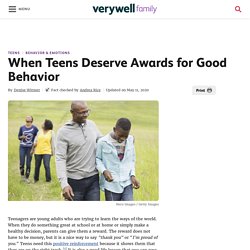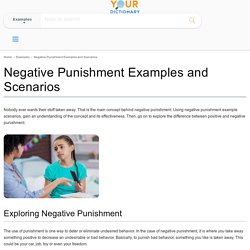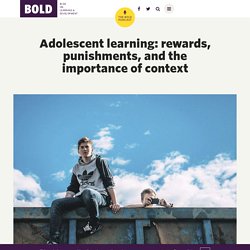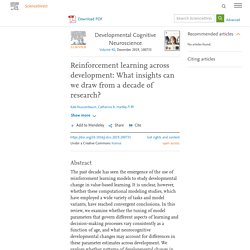

In order to raise healthy and independent children, parenting involves various way of shaping the children's behaviour through behavioural learning process known as Operant Conditioning.
Operant Conditioning. Overview of Reinforcement and Punishment. Reinforcement vs Punishment in Psychology. Reinforcement vs Punishment Psychology [Examples]
Reinforcement and punishment are often used as parenting tools to modify children’s behavior.
![Reinforcement vs Punishment Psychology [Examples]](http://cdn.pearltrees.com/s/pic/th/reinforcement-punishment-183049524)
Let’s review the difference between positive reinforcement and negative reinforcement, and the difference in outcomes between them. The Difference Between Positive And Negative Reinforcement In behavioral psychology, reinforcement is the introduction of a favorable condition that will make the desired behavior more likely to happen, continue or strengthen in the future1. Because the favorable condition acts as a reward, reinforcement is a reward-based operant conditioning.
Examples of Positive Reinforcement in Parenting. Positive Reinforcement - Tips for teaching and parenting. Examples of Negative Reinforcement in Parenting. What is Negative Reinforcement? Examples of Positive Punishment in Parenting.
What is Positive Punishment? Examples of Negative Punishment in Parenting. Negative Punishment. Parenting: The teen years. Negative Reinforcement and Operant Conditioning. Did you know that parents could train their children to act defiant?

“Who in their right minds would do that?” You may wonder. Well, many of us actually do. Find out how a lot of parents unknowingly train their children in rebellion using negative reinforcement. Behavioral psychologist, B.F. Challenges of Parenting Teens and Why They Need Boundaries. Healthy boundaries are essential for the psychological well being of children and teens.

Although it’s hard for some parents to set those boundaries, feeling as though they are being too rough or too strict, boundaries help a child develop a sense of self. When parents do not establish boundaries, teens have a hard time feeling safe, secure, and protected. For instance, when parents set a curfew for 11pm, and a teen understands that the boundary was established in order to keep him or her safe, that teen registers that his or her parents want to offer protection and safety. Parenting: The teen years. Parent-Child Relationship Problems.
Building and maintaining a relationship with a child takes work.

Even the most loving parents must put a lot of time and effort into developing positive relationships with their children. Yet parents can still have problems with their children, even if they've done everything they can to avoid them. How to Reward Your Teen for Good Behavior. Teenagers are young adults who are trying to learn the ways of the world.

When they do something great at school or at home or simply make a healthy decision, parents can give them a reward. The reward does not have to be money, but it is a nice way to say "thank you" or "I'm proud of you. " Teens need this positive reinforcement because it shows them that they are on the right track.1 It is also a good life lesson that you can pass on: good things happen to good people. Parenting Children with Positive Reinforcement (Examples + Charts) Children don’t come with instructions and discipline is often experienced by parents and children alike as an arena where our will and wits are tested.

Positive reinforcement is only one of many forms of discipline, but from the perspective of positive psychology, it may as well be the most important one as it focuses on amplifying what is already good in our children and in ourselves as their caretakers. Positive reinforcement as a form of positive discipline allows us to tap into our children’s individual strengths, draw attention to their personality traits and interests, and as a result give us an opportunity to connect, communicate effectively, and ultimately empower them to be more of themselves.
Negative Punishment Examples and Scenarios. Nobody ever wants their stuff taken away.

That is the main concept behind negative punishment. Using negative punishment example scenarios, gain an understanding of the concept and its effectiveness. Conclusion. Adolescent learning: rewards, punishments, and the importance of context: BOLD. Adolescents’ unique sensitivity to rewards is thought to be due to increased activity in and communication between areas of the brain that respond to rewards.

However, we also know that many of the same brain areas also respond to punishment and that there are dynamic changes occurring throughout the brain during adolescence. Much like the complexity of brain development, the story about how adolescents learn from reinforcement might not be so simple. “The way that adolescents learn from the choices that they have made in the past will ultimately influence their future choices and actions.” An in-depth review of studies examining how we learn from reinforcement across age shows mixed results. Reinforcement learning across development: What insights can we draw from a decade of research?
Abstract The past decade has seen the emergence of the use of reinforcement learning models to study developmental change in value-based learning.

It is unclear, however, whether these computational modeling studies, which have employed a wide variety of tasks and model variants, have reached convergent conclusions.